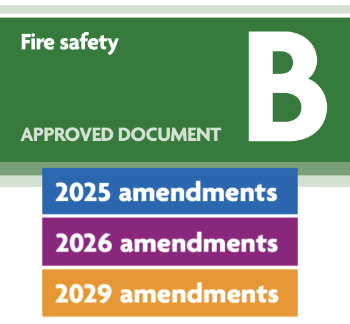Translation of building contracts
Contents |
Translation: how it works
Translation is at the centre of an age-old debate that opposes 'word-for-word' and 'sense-for-sense'. The strategy generally recommended to translate building contracts lies somewhere in between.
In his English Reader's guide to the French Legal System (1991), Martin Weston, Senior Translator of the European Court of Human Rights, prescribes 'functional equivalence', a translation strategy that refers to 'dynamic equivalence', a concept developed by the famous American Baptist minister Eugene Nida (Nida and Taber, 1969/1982). Weston recommended functional equivalence as the ideal translation method for construction law, while word-for-word was to be regarded as the basic method.
But another famous American linguist, Lawrence Venuti argued that Eugene Nida's work was essentially motivated by the exigencies of Bible translation and that the "values that inform his theory of translation [are] Christian evangelism and cultural elitism" (Venuti, 1995:22). In other words, his equivalence strategy had a different purpose than that of the translation of construction and legal translation more generally. Moreover, Eugene Nida was "masking a basic disjunction between the source and target-language texts, which puts into question the possibility of eliciting 'similar' response" (ibid).
In short, dynamic equivalence is illusory, so one might as well stick to what is often described as 'literal translation'. Indeed, Martin Weston insisted that "so long as they are natural in the target language, [word-for-word translations] should not be shunned merely because they are literal translations".
He echoed another famous British linguist, Peter Newmark, insisting that "a good translator abandons a literal version only when it is plainly inexact or […] badly written. A bad translator will always do his best to avoid translating word for word" (Newmark, 1988:76).
What does it mean for building contracts?
In the context of building developments, the parties involved often request the inclusion of foreign documentation in the contract, e.g. to establish the cost of construction.
However, most legal translation scholars agree that contracts are system-bound (see for instance Cao 2007, Zweigert and Kötz 1992, Weisflog 1987 and Weston 1983). Indeed, like all contracts, building contracts reflect the history, evolution and culture of their specific legal system.
In practice, this means that a British JCT contract must not be translated as if it were a French contrat de louage d'ouvrage.
But if the translator decides to go for a word-for-word version, or a literal translation, a French contractor might not understand the original message and the French translation will not elicit the right response.
The dilemma is that building contracts are a hybrid genre. The boundaries between the legal instructions and the technical information are fuzzy.
It is therefore vital that the person who translates them understands the context, knows who the text is addressing and what function the translation is meant to fulfil. Legal aspects or not, the translator must produce a text that conforms to the functional conventions known to the foreign audience.
Weston's 'Functional equivalence' is therefore a strategy that is functionally driven by purpose.
While is it based on the same approach as Nida's dynamic equivalence - seeking a domestic equivalence to which the reader can relate - it avoids references to the target legal system and sticks to the function of the given order.
Some examples
RIBA work stages
Architect contracts are based on work stages. A main reference used in the UK is that of the Royal Institute of British Architects. The 2013 RIBA work stages include several stages, among them the so-called Developed Design.
If French translators were to translate it word-for-word, they would probably write "Design Détaillé". This would be worse than meaningless. It would be linguistically treacherous because Design is a false friend in French - it refers to the design of industrial objects, not to that of buildings.
On the contrary a dynamic approach would be "Avant-projet détaillé (APD)" (lit. Detailed Pre-Project). This is meaningful because it is the name of an approximate equivalent in the French legal system. But it would be legally treacherous as Developed Design refers to the English context.
The functional equivalence could consist in using the function of the work stage (the provision of developed or even technical design before proceeding to pre-construction phase) : "phase de projet détaillé" (detailed project phase) for instance, could be meaningful but not legally treacherous.
Document names
A common document in building contract information is an architectural specification. It is a "document that describes the work to be carried out, often in great technical detail" (Uff, 2002).
The French literal translation could be "spécifications architecturales". It may be faithful but it is nowhere near the corresponding French documents: cahiers des clauses techniques générales et particulières for instance (books of general and particular technical specifications).
Again the latter could be a good dynamic equivalence, but it would be legally dangerous. Instead, functional equivalence could provide "clauses techniques" (technical specifications), a name that would makes sense to French readers without referring explicitly to their legal system.
Standards
British Standards (BS) are often preferred to heavy technical information in architectural specifications. But BS can sometimes be considered as a reference to the jurisdiction of the law of England and Wales.
This is why BS that originate from European regulations are referenced as EN. For instance "BS 12620" (aggregates for concrete), is actually a European standard. In French, it has a valid equivalent: NF 12620 (where NF, or BS, should actually be followed by the initial EN).
But some BS are purely British and have no equivalents. For instance, BS 4800:2011 (schedule of paint colours for building purposes) is solely British. In such case, a translator's note is helpful, for instance:
NdT: 'norme britannique comportant une nomenclature de couleurs de peinture, utilisée pour convenir du choix de couleurs dans le cadre de permis de construire, de travaux de rénovation ou de grands travaux. Ces couleurs sont conformes aux exigences des règlementations en vigueur au Royaume-Uni.
[Translator’s note: British standard that provides a schedule of colours of paint used for planning application, conservation or major works. These paint colours meet the local regulations requirements of the UK].
This article was created by --Pierre Fuentes 02:13, 20 December 2013 (UTC)
Related articles on Designing Buildings
- Contracts
- Spelling
- Writing technique
External references
- Alcaraz, E. and Hughes, B. 2002. Legal Translation explained. Manchester: St Jerome.
- Butt, P. and Castle, R. W. 2006. Modern legal drafting: a guide to using clearer language '2d edition. Cambridge University Press: Cambridge.
- Cao, Deborah. 2007. Translating Law. Clevedon: Multilingual Matters.
- Child, B. 1992. Drafting Legal Documents: Principles and Practices, 2d ed. West Publishing Co.
- Code de la construction et de l'habitation, septième édition. 1994. Paris: Dalloz.
- Darbelnet, J. 1979. Réflexions sur le discours juridique. Meta 24, pp. 26-34.
- Dickson, B. 1994. Introduction to French Law. London: Pitman Publishing.
- French Ordre des architectes, 2013, Outils et documents
- Jacobson, M. H. S. 2008. "A Checklist for Drafting Good Contracts". Journal of the Association of Legal Writing Directors [online] Vol. 5 pp 79-117
- Mounin, G. 1979. La linguistique comme science auxiliaire dans les disciplines juridiques. Meta, 24 pp. 9-17
- Munday, J. 2008 Introducing Translation Studies, Theories and applications, 2nd Edition. London: Routledge.
- Newmark, Peter 1988. A Textbook of Translation. London: Prentice Hall.
- Nida, E. 1975. Language Structure and Translation, Stanford CA: Stanford University Press.
- Nida, E. and Taber, C. 1969/1982. The theory and practice of Translation. Leiden, The Nederlands: Brill Academic Publishers.
- Trosborg, A. 1997. Rhetorical strategies in legal language: discourse analysis of statutes and contracts. Tübingen: Narr.
- Uff, J. 1974/2002. Construction Law. London: Sweet and Maxwell.
- Venuti, L. 1995, The Translator’s Invisibility, London: Routledge.
- Weisflog, Walter, 1987, "Problems of legal translation", in Swiss reports presented at the 12th International Congress of comparative law, Zürich: Schultess.
- Weston, Martin. 1991. An English Reader's guide to the French Legal System. Oxford: Berg Publishers.
- Zweigert, Konrad and Kötz, Hein, 1992, Introduction to comparative law, Oxford: Clarendon Press.
Featured articles and news
Designing for neurodiversity: driving change for the better
Accessible inclusive design translated into reality.
RIBA detailed response to Grenfell Inquiry Phase 2 report
Briefing notes following its initial 4 September response.
Approved Document B: Fire Safety from March
Current and future changes with historical documentation.
A New Year, a new look for BSRIA
As phase 1 of the BSRIA Living Laboratory is completed.
A must-attend event for the architecture industry.
Caroline Gumble to step down as CIOB CEO in 2025
After transformative tenure take on a leadership role within the engineering sector.
RIDDOR and the provisional statistics for 2023 / 2024
Work related deaths; over 50 percent from constructuon and 50 percent recorded as fall from height.
Solar PV company fined for health and safety failure
Work at height not properly planned and failure to take suitable steps to prevent a fall.
The term value when assessing the viability of developments
Consultation on the compulsory purchase process, compensation reforms and potential removal of hope value.
Trees are part of the history of how places have developed.
The increasing costs of repair and remediation
Highlighted by regulator of social housing, as acceleration plan continues.
Free topic guide on mould in buildings
The new TG 26/2024 published by BSRIA.
Greater control for LAs over private rental selective licensing
A brief explanation of changes with the NRLA response.
Practice costs for architectural technologists
Salary standards and working out what you’re worth.
The Health and Safety Executive at 50
And over 200 years of Operational Safety and Health.
Thermal imaging surveys a brief intro
Thermal Imaging of Buildings; a pocket guide BG 72/2017.
























Comments
Text and audio translations, along with video translations, play an important role in today's world, where correct translation of not only text and documents matters, but also visual content such as video. AI video translation is now beginning to play a key role in this process, providing more accurate and faster translations that facilitate effective communication and collaboration on a global scale.